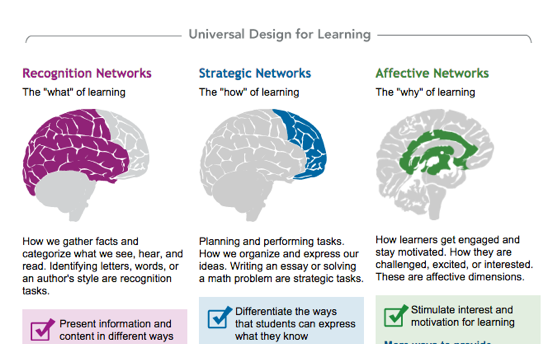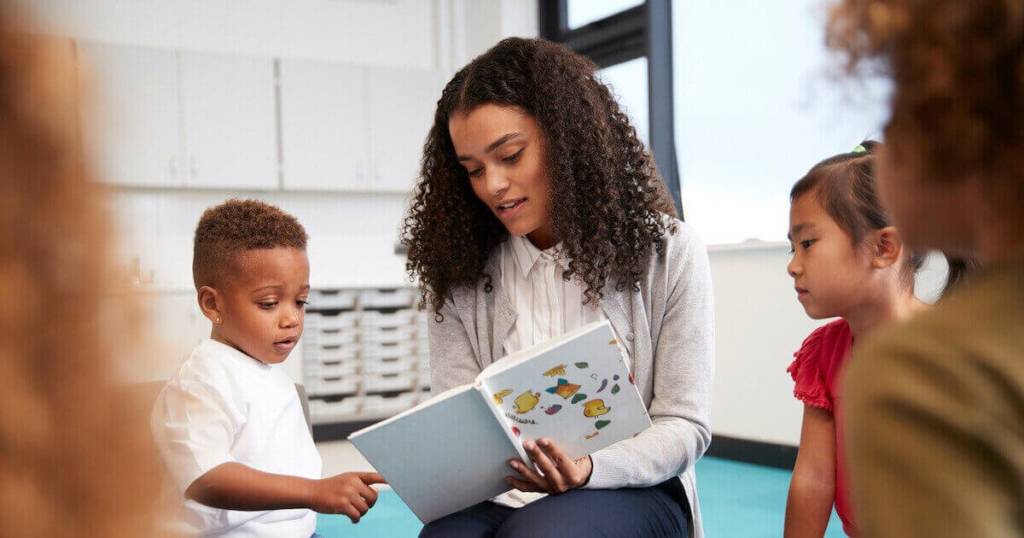What is Universal Design for Learning?
Universal Design for Learning has been gaining in popularity among teachers and school districts in recent years. This inclusive teaching methodology offers educators a set of strategies and tools for engaging every student and for bringing learning equity to a diverse classroom by acknowledging and accommodating each learner’s individual needs and strengths.
While it is typically implemented on a district or school level, there are ways that teachers can incorporate Universal Design for Learning into their curriculum. But first it is important to understand what it is and how it was developed.
Often abbreviated UDL, Universal Design for Learning is an approach to education that is intended to give all students an equal opportunity to succeed. However, this definition does not even begin to explain the philosophy and the science behind this fascinating educational discipline.
UDL incorporates a set of principles that were born from the desire to offer every student an equal opportunity to learn, and is based on the idea that every person has their own unique and individual learning style.
[RELATED] How to Advance Your Career: A Guide for Educators >>
For teachers, this means finding ways to create flexibility in how students access, engage with and communicate about specific subject matter. doing so requires using teaching strategies and lesson plans that help all kids, that that are especially helpful for those with learning and attention issues, according to the experts at Understood.org, a coalition of 15 nonprofits with a stake in UDL research.
UDL also adopts a scientific approach that synthesizes educational theory and practice with neuroscience. The Center for Applied Special Technology (CAST), an education research and development nonprofit whose core mission is focused on UDL, describes it as “a framework to improve and optimize teaching and learning for all people based on scientific insights into how humans learn.”
CAST has put in place a team of educators, learning scientists, instructional designers, literacy experts, policy analysts, UX and graphic designers and software engineers who are focused on developing “an approach to curriculum that minimizes barriers and maximizes learning for all students” — one that acknowledges that “the way people learn is as unique as their fingerprints.”
A helpful video overview of Universal Design for Learning provided by CAST explains that:
Universal refers to “curriculum that can be used and understood by everyone” and provides meaningful learning opportunities for each and every student; with the understanding that each learner in the classroom brings their own backgrounds, strengths, needs and interests.
Design refers to efforts to create flexible curriculum “that challenges and engages diverse learners.” To do this, it is essential to develop learning goals, methods, materials and assessments that work for everyone.
Learning in UDL connects to the neuroscientific understanding that the brain has “three broad networks,” and that students must be effectively challenged to use all three to develop “knowledge, skills and enthusiasm for learning.” According to CAST, these three networks are:
- Recognition: “the WHAT of learning”
- Skills & Strategies: “the HOW of learning”
- Caring & Prioritizing: “the WHY of learning”

CAST offers a deeper dive into specific Universal Design for Learning strategies on its UDL Guidelines page.
The Three Main Principles of UDL
To put the above UDL concepts into practice, Understood.org explains that educators follow three core principles as a framework for developing lesson plans and assessments:
- Representation: This involves offering subject matter information in multiple formats (for example: text, audio, video and hands-on learning) to give students options for accessing the material in the ways that most closely align with their learning strengths.
- Action and expression: Offering different ways for students to communicate about what they’ve learned is also central to UDL’s educational philosophy (for example taking a pencil-and-paper test, giving an oral presentation or doing a group project).
- Engagement: Teachers practicing UDL are encouraged to explore multiple ways to engage and motivate students, and to empower kids to make choices by creating “assignments that feel relevant to their lives.” (For example: adding an element of play to skill-building exercises or creating opportunities for students to get up and move around rather than remaining seated at their desks hour after hour).
Understood.org and CAST offer a more in-depth look at specific UDL teaching techniques in a post titled “5 Examples of Universal Design for Learning in the Classroom.”
UDL Teacher: ‘Every Child is Different’
One example of UDL in action can be seen at the Thomas Edison Elementary and Middle School in Brighton, Mass., which decided to implement UDL because they recognize the need for diversity of instruction in order to reach every student.
“We’re working on changing the way we teach,” Principal Samantha Varano told the Harvard Gazette. “There used to be a standard way of teaching: One lesson for the whole class,” she explained. “But every child is different. Every child has a unique background and different way of learning. We must think of a variety of lesson plans for students with all varying capabilities. We want to reach students where they are — and work to grow from there.”
Incorporating UDL into Your Classroom
While implementing Universal Design for Learning is often a district, school or even statewide initiative, there are steps you can take to incorporate UDL into your lesson plans even if your school is not adhering to the UDL principles.
The first step is to define your goals.
- What do you hope to achieve by implementing UDL?
- What goals do you have for your class as a whole and each individual student? Be sure your goals are aligned with your state standards.
The second step is to assess your current class and each individual students’ needs.
- What is the makeup of your class?
- What are the strengths and weaknesses of your students? Look at each student through the UDL lens and evaluate them based on the three different brain networks and UDL principles.
Finally, evaluate what challenges you foresee.
- How will you teach to the multiple learning styles in your classroom?
- How will implementing UDL affect your current curriculum?
Luis Perez, author of the UDL-inspired book “Mobile Learning for All,” suggests starting small. In an article in educator resource website The Journal, he said, “You’re not going to apply every single (guideline) to every single lesson. It depends on which ones are relevant to your learning goals. Start with a single lesson or activity and then build success from that, and then start to look at other parts of your curriculum.”
Learning More About UDL
Many teachers who are interested in gaining a deeper understanding of how to put UDL educational concepts (as well as other teaching styles and specializations) into practice in the classroom choose to pursue a Master of Education degree. Such programs not only present an opportunity to become a better educator, in many school districts obtaining an MEd will also earn teachers a salary increase.
[RELATED] Career Options Expand, Salaries Spike with a Master of Education Degree >>
To help expand educational opportunities for busy working teachers, University of San Diego has developed an innovative, 100% online Master of Education degree program that gives teachers the option of earning their MEd on their own schedule, while interacting with and learning from fellow educators across the country.
The USD program offers teachers the option of choosing from five distinct specializations, one of which offers an in-depth focus on Universal Design for Learning.





